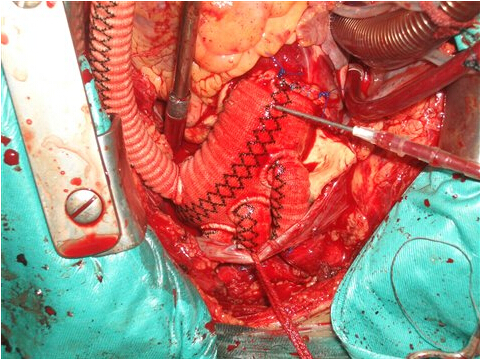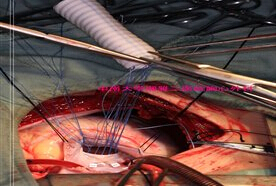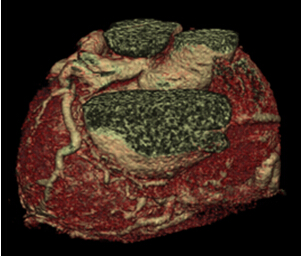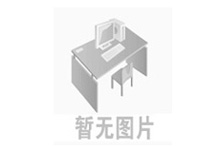Impact of Prosthesis-Patient Mismatch (PPM) in the Mitral Position on Long Term Survival
Guo-Wei He (何国伟), MD, PhD, DSc1,2, Ying-Xing Wu, MD1, Gary Grunkemeier, PhD1, Xiao-Cheng Liu2,MD, Albert Starr, MD1
1Providence Heart & Vascular Institute & Department of Surgery, Oregon Health & Science University, Portland, Oregon, 97225, USA
2 TEDA International Cardiovascular Hospital, Medical College, Nankai University,Tianjin, China
Objectives: Severe PPM is an independent predictor of mortality after mitral valve replacement. As opposed to other independent risk factors, PPM may be avoided or its severity may be reduced with the use of a prospective strategy to implant a prosthesis with a larger effective orifice area at the time of operation. We investigated possible impact of PPM on the long term survival after MVR from St. Vincent Heart Institute, Portland, OR, U.S.A.
Methods: Between 1985 and 2006, 987 isolated mitral valve replacement were performed. Among those, 443 have data to compute the index of effective orifice area (IEOA). The longest follow-up was 15 years with mean of 5.5 years for Carbomedics (n=113), 4.8 years for St. Jude (n=214), and 2.1 years for Perimount prostheses (n=116). The size of prostheses were 25~33. The correlation between the survival and IEOA (cm2/M2) or geometric EOA (GOA) for each type of prostheses was analyzed with univariate (Kaplan-Meier) and multivariate (Cox regression) methods.
Results: IEOA was significantly correlated with the long-term survaival, when IEOA was grouped to <1.0, 1.0~1.5, and >1.5 in the whole group of patients (p=0.016) or in the patients who received mechanical prostheses (p=0.02), but not in the patients who received tissue prostheses (p=0.8). The patients who received smallest prostheses (IEOA <1.0) had poor survival after 5-years. Simialrly, the patients who received largest prostheses (IEOA >1.5) also had poor survival (p=0.016). In addition, the patients who received small size of mechanical prosthese (IEOA <1.0) had the highest explant rate but this trend did not exist in the patients received tissue prostheses. Cox regression showed that age (hazard ration 1.04, p<0.0001) and IEOA (< 1.0 or >= 1.5, hazard ration 2.79, p<0.0001) of mechanical prostheses were independent risk factors for the long-term survival. In contrast, GOA was not significantly correlated with the survival.
Conclusions: We conclude that 1). PPM after MVR is a complex issue because the EOA data vary from different reports and need to be further justified; 2). geometric orifice area is consistent but is less sensitive for PPM; 3). PPM may include two extreme directions: too large (IEOA>=1.5) that may reflect a severely enlarged heart or too small (IEOA<1.0) that may reflect a too small prosthesis. Both may affect the long term survival; and 4). when the IEOA is in range of 1.0~ 1.5, the patients have the best long-term survival.
君健网www.junjian99.com独家刊登,如需转载请注明出处。
坐式法对细小主动脉根部主动脉替换 上一篇 | 下一篇 科学家发现胰岛素分泌新机制
- 经胸右室穿刺封堵婴儿室间隔缺损25例报告2014-12-15
- 风湿性心脏病瓣膜置换术后焦虑与抑郁状况分析2014-12-10
- 高海拔地区59例双瓣膜置换术的临床分析2014-12-10
- 肺动脉夹层动脉瘤综述2014-12-15
- 马凡综合征主动脉根部瘤的改良Bentall术治疗2014-12-15
- 深低温停循环后梯度灌注复温脑保护的实验研究2014-12-15
- 组织工程血管基质的制备及保存2014-12-15
- 胸腔镜下体外循环心脏手术10例报道2014-12-15
- 原位心脏移植患者术后远期随访与分析2014-12-15
- 全球首个在“移植子宫”内孕育的婴儿降生2014-12-10
-
医生姓名:刘伏友
所在科室:肾内科
工作医院:中南大学湘雅二医院
专业职称:主任医师
擅长疾病: 腹膜透析、各类肾病、慢性肾功能衰竭、尿毒症、血液...













